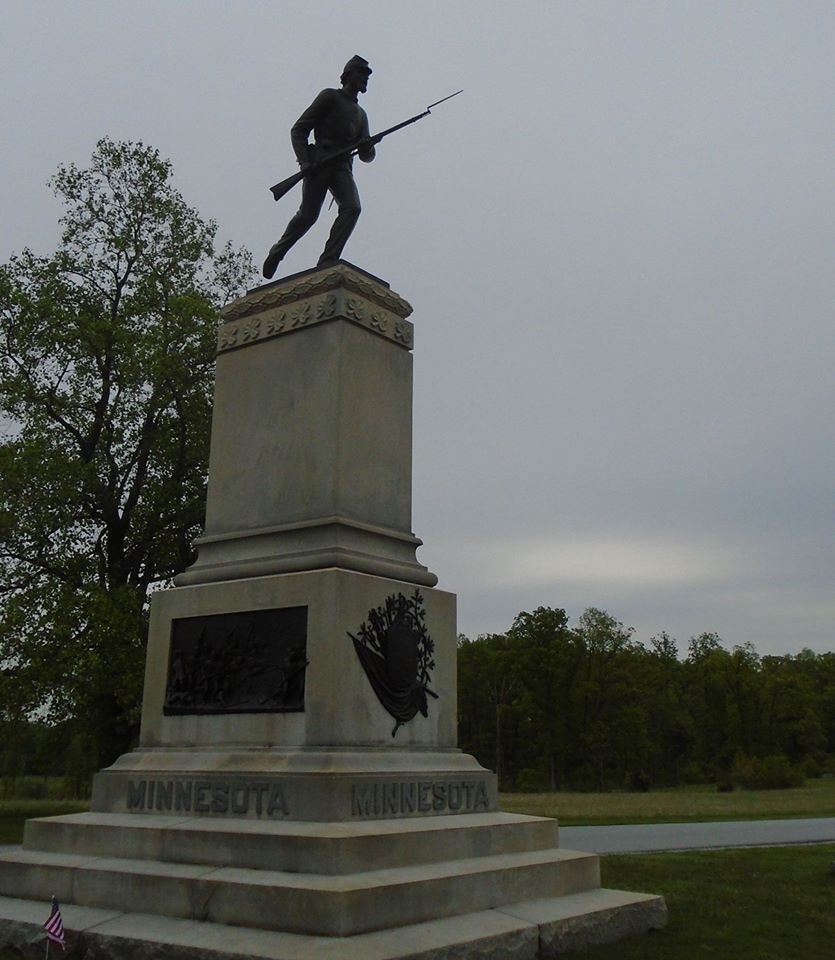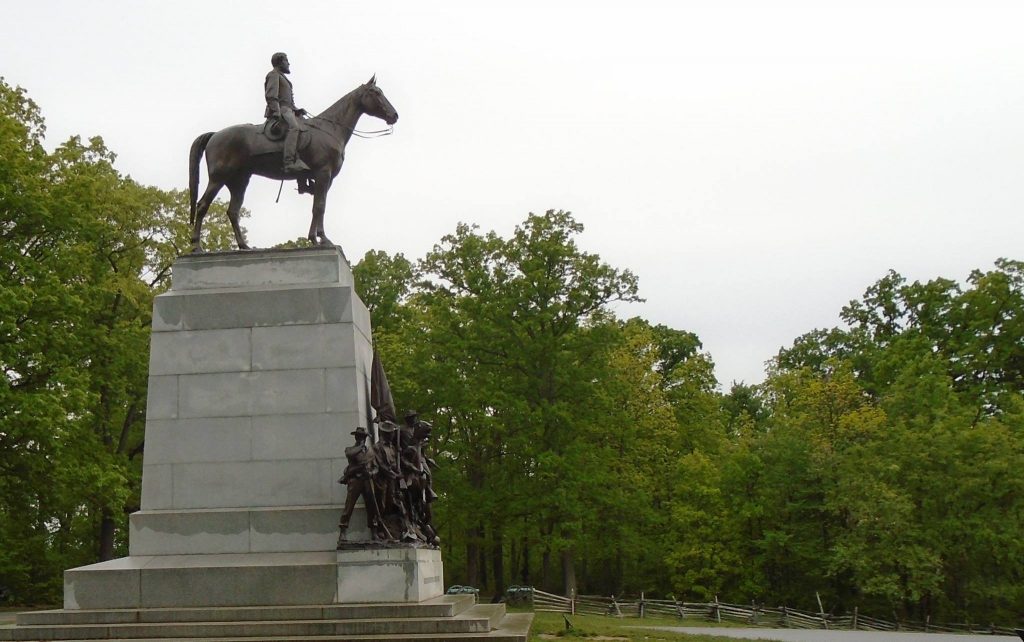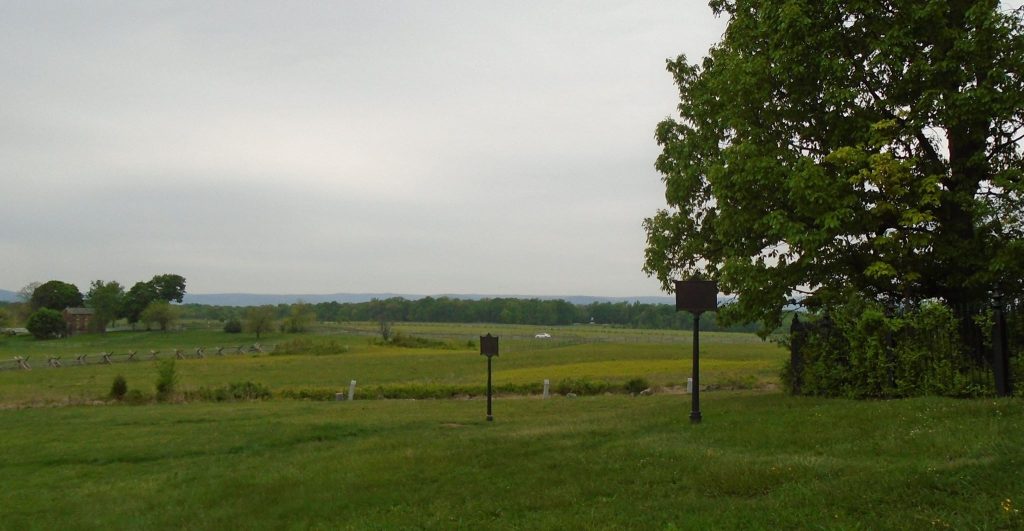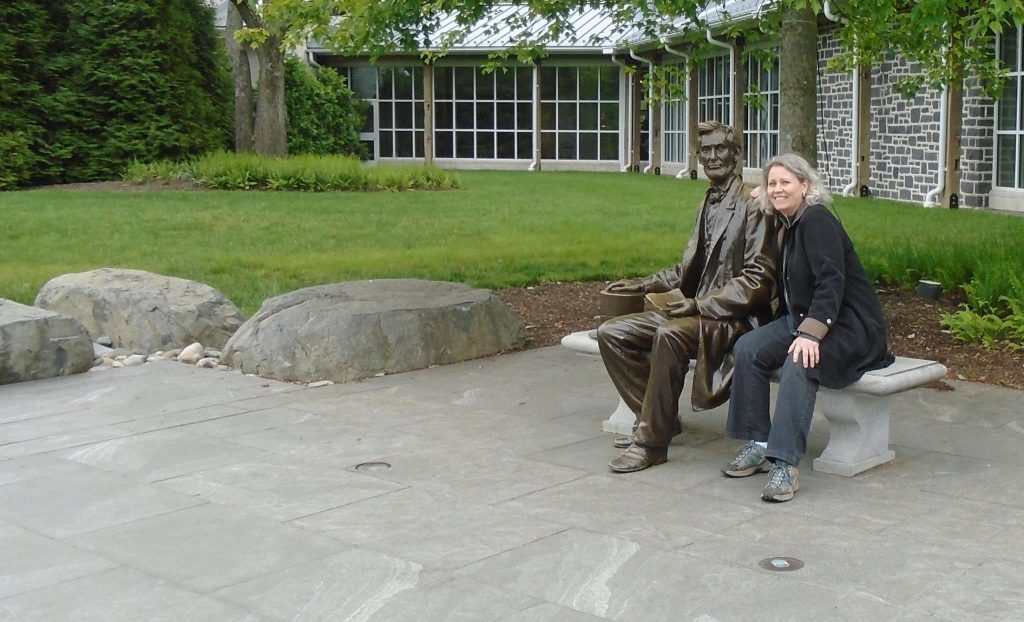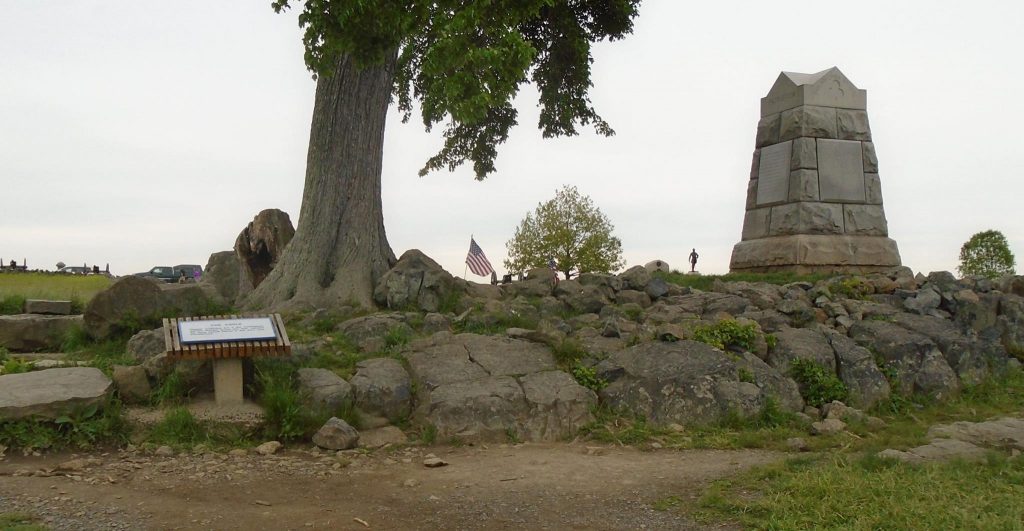Stopped off at Gettysburg on the way home. I have been here a few times before, the first time in 1985 with my colleague Rick Roberts, who knew the facts of the battle very well and gave a great commentary. But each time it is moving. So many brave men and each shot or shell that killed or maimed, killed or maimed an American, since we were on both sides. (None of my ancestors was in American during the Civil War, but one of Chrissy’s fought with the Wisconsin regiments.)
My first picture is the “high water mark”. Some Confederates got just about to where the sign shows and then were turned back. This was the culmination of Pickett’s charge. (It should more properly be called Longstreet’s advance, since General James Longstreet was in overall command and Pickett’s division was only one of three participating.) Confederate Brig. Gen. Lewis A. Armistead leading the troops was killed on that spot. Ironically, Armistead’s’ best friend Winfield Scott Hancock, commanded the Union troops. Many of the officers knew each other and had been friends before the war. The end of the charge was effectively the end of the battle, the bloodiest on American soil. Although the war would drag on until April 1865, this battle and the fall of Vicksburg the next day sealed the fate of the South.
12,500 men set off across that field. Only a few successfully covered the 3/4 miles to the high water mark. When they finally retreated only about half were left.
The next picture shows Confederate commanding general Robert E. Lee at the Virginia monument. This is the place where the the attack commenced. The next picture shows the field looking the other direction. The trees at the edge are the clump of trees that Lee told James Longstreet to use as his objective in the attack.
The fourth picture shows Chrissy sitting with a statue of Abraham Lincoln. The battle is famous for its size and consequences, but it is even better known as the place where Lincoln delivered his Gettysburg Address. It is a beautiful and short speech that many of us memorized in HS. It consists of only 272 words and Lincoln wrote it himself. Would that today’s politicians could be so concise and thoughtful.
I had to add the last picture, which shows the monument to the First Minnesota Volunteers. On the second day of the battle, they were ordered to charge oncoming Confederate troops who outnumbered them 5 to 1. The Minnesota volunteers succeeded in blunting the advance but at the cost of an 82% casualty rate. The 47 survivors found themselves in the middle of the battle the next day and were ordered to charge again, this time to blunt Pickett’s charge. They again showed their heroism.

